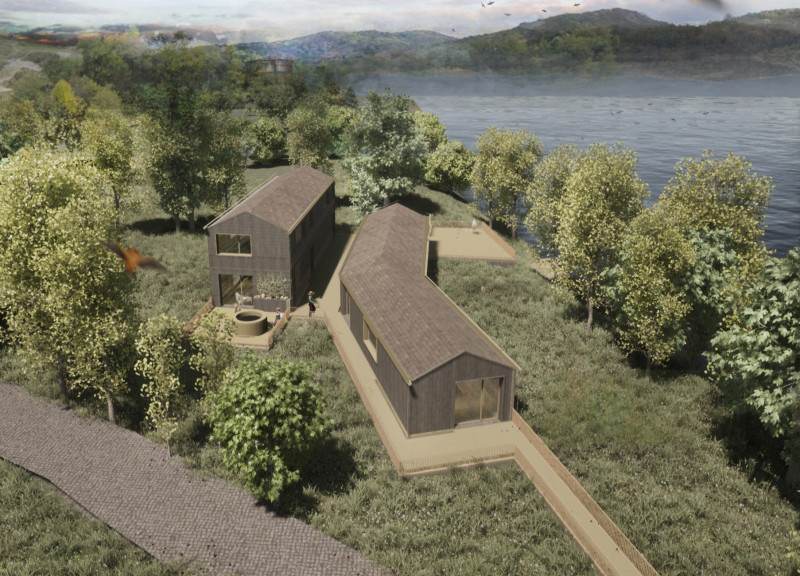5 key facts about this project
The architectural design project titled "Linkage" is situated in an area that highlights the importance of community and sustainable living. The design aims to foster connections among residents by creating pathways that blend with the existing buildings. It focuses on preserving historical structures while incorporating new features that meet modern needs and support environmentally friendly practices.
Preservation of Heritage
Central to the design is the effort to keep parts of the existing houses intact. This not only honors the cultural history of the site but also creates a connection between the past and the present. By maintaining these historical elements, the design fosters a sense of identity within the community, ensuring that history is woven into the fabric of future developments.
Sustainability in Design
The project prioritizes sustainability as a key factor in its development. The wall system uses a timber frame, providing durability and flexibility in design. Straw thermal insulation is utilized to improve energy efficiency and reduce heat loss. Rainwater management is handled with the inclusion of metal chains, which help collect and reuse water, demonstrating a thoughtful approach to environmental care.
Integration with Nature
Connecting the design with the surrounding natural environment is another significant focus. The platforms are designed to extend towards the nearby natural areas and a lake, allowing for an easy transition between the built and natural spaces. Additionally, placing the schinkel on the roof encourages the movement of bats, showing consideration for local wildlife and promoting ecological balance.
Cultural Relevance
Key features such as a preparation area for natural paints and the preservation of an original stone well emphasize local traditions and ecological awareness. These elements enrich the project by combining practical uses with cultural significance, enhancing the sense of community identity and shared experiences.
The design demonstrates a careful balance between keeping the historical context and encouraging community interaction. The thoughtful incorporation of pathways and natural features creates an environment that invites engagement and appreciation of both the past and the surrounding nature.






















































